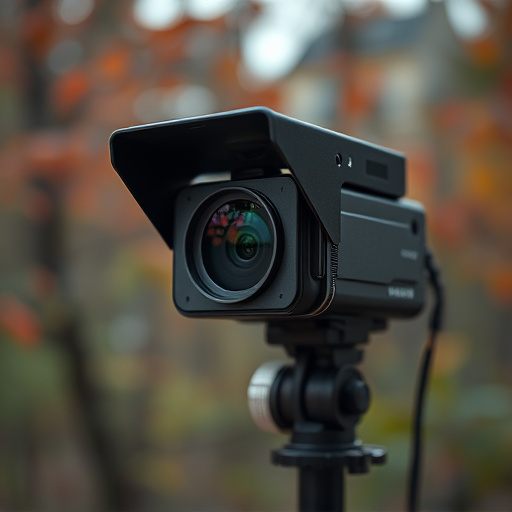RF detector technology is vital for detecting hidden cameras, especially nanny cams. To ensure home security and privacy, understand RF detectors' functionality and follow Nanny Cam Placement Tips: prioritize secluded areas like kitchens, bathrooms, and bedrooms; scrutinize limited visibility spots; and use professional-grade detectors with high sensitivity. Legally set up cameras with consent, avoid private spaces, and maintain secure recordings while adhering to data protection regulations.
Uncover the secrets of your home with our comprehensive guide to detecting hidden nanny cams. In an era where privacy is paramount, understanding RF (Radio Frequency) detector technology becomes crucial for ensuring the safety of your family and home. This tutorial navigates you through identifying potential camera hideouts, effective sweep techniques, and ethical placement guidelines. By following these Nanny Cam Placement Tips for your Home, you’ll gain peace of mind knowing your private spaces remain secure.
- Understanding RF Detector Technology for Nanny Cam Detection
- Identifying Potential Nanny Cam Hideouts in Your Home
- Tools and Techniques for Effective Camera Sweep
- Best Practices for Ethical and Legal Nanny Cam Placement
Understanding RF Detector Technology for Nanny Cam Detection
RF (Radio Frequency) detector technology plays a pivotal role in detecting hidden cameras, particularly those strategically placed as nanny cams in homes. These devices operate by scanning for electromagnetic signals emitted by various electronic devices, including covert camera transmitters. Understanding how RF detectors work is essential when it comes to identifying potential hidden surveillance equipment.
When it comes to Nanny Cam Placement Tips for Home security, one must be vigilant and think like a thief. Many nanny cams are designed to be discreet, making them challenging to detect with the naked eye. However, by employing an RF detector, homeowners can uncover these hidden devices. These tools allow users to sweep through different frequency ranges, potentially picking up signals from active cameras. With the right knowledge and equipment, individuals can ensure their privacy and safety in the comfort of their own homes.
Identifying Potential Nanny Cam Hideouts in Your Home
When it comes to identifying potential nanny cam hideouts, your home’s layout and common areas are a good starting point. Kitchens, bathrooms, and bedrooms are popular spots for hidden cameras due to their privacy and proximity to sensitive activities. Pay close attention to areas with limited visibility or easily movable furniture, as these can be ideal concealment points. Look for unusual outlets, holes in walls, or even seemingly random appliances that might not belong, as these could all serve as hiding places for malicious devices.
Remember, nanny cam placement tips focus on maximizing both privacy and safety. Regularly checking potential hidden camera locations and staying vigilant can help ensure your home remains a secure space for everyone involved.
Tools and Techniques for Effective Camera Sweep
When conducting an RF detector sweep for hidden cameras, particularly in a domestic setting like homes, the right tools and techniques are paramount. Start with a robust RF detector capable of picking up signals from various camera types. Consider models designed for professional use, offering advanced sensitivity and frequency range.
Complement your detector with knowledge of Nanny Cam Placement Tips Home. Understanding common hiding spots, such as wall-mounted shelves, peepholes, or behind decorative items, allows you to target your search effectively. Moving gradually around the space while scanning helps ensure comprehensive coverage, identifying potential signals that might be obscured by physical obstructions.
Best Practices for Ethical and Legal Nanny Cam Placement
When placing a nanny cam in your home, ethical and legal considerations are paramount. Always obtain prior consent from all occupants, especially children and employees. Nanny cams should be clearly visible with indicators like “Camera in Use” to respect privacy and avoid hidden surveillance. Place cameras in open areas like living rooms or kitchens where activities can be observed without invading personal spaces.
Avoid stealthy placement near beds, bathrooms, or other private areas. Ensure camera positioning doesn’t obstruct views or cause discomfort. Regularly review the footage and only use it for legitimate purposes related to care or security. Keep records secure and confidential to maintain trust and comply with data protection regulations.
Detecting hidden nanny cams involves a combination of understanding RF detector technology, knowing where to look in your home, and employing effective sweep techniques. By following these steps and best practices for ethical and legal placement, you can ensure the safety and privacy of your family in the comfort of your own home. Remember, proactive measures like these are essential tips for nanny cam placement to maintain a secure living environment.
